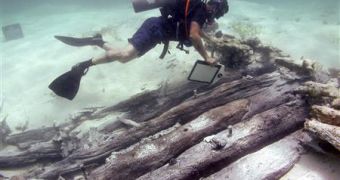A couple of kava kava dolls sparked the interest of marine archaeologists, which led to the discovery of an old shipwreck. The remains were found to belong to a Spanish ship that was illegally transporting 93 African slaves to Cuba, during a time when slavery was abolished in most parts of the world. The ship sunk, the Spanish crew was chained and sent for trial in Cuba, and the African slaves were freed. The descendants of the slaves are still populating the islands today.
Nowadays, the 193 square miles (500 square km) Turks and Caicos Islands represent a British territory comprised of two groups of tropical islands with a population of nearly 30,000 (Caicos Islands are the larger and Turks Islands are the smaller ones) famed as a tourism and diving place and housing one of the world's longest coral reefs. They are located 575 miles (925 km) southeast of Miami and 39 miles (63 km) to the southeast of Mayaguana in the Bahamas, and this is where the ship wrecked.
Until 1993, nothing else was heard about the event, when Grethe Seim, founder of the Turks and Caicos National Museum, and Donald Keith, president of the Ships of Discovery marine archeology institute, visiting the Smithsonian Institution, found an intriguing letter from an artifact salesman from the island. It reported the shipwreck in 1841 and the sale of the kava kava glass-eyed dolls. Further research completed the story and provided clues of the location of the ship.
They found the remains (a wooden brigantine) close to the place indicated in the letter and were certain that it was “Trouvadore,” the illegal slave ship. "The people of the Turks and Caicos have a direct line to this dramatic, historic event. It's how so many of them ended up being there," shared Keith on the importance of the discovery, as quoted by Reuters. Researchers are still looking for a list of English names given to the slaves that was sent by the island's officials to the authorities, which would provide an essential piece of information to the islands’ current inhabitants and possible descendants.

 14 DAY TRIAL //
14 DAY TRIAL //